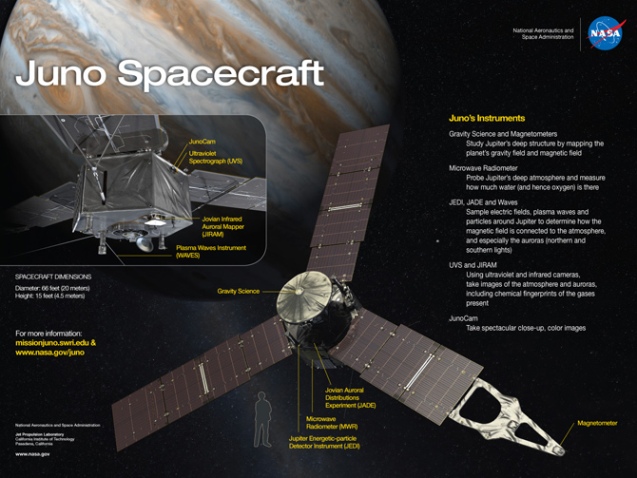The 4-ton Juno spacecraft will carry a high resolution CCD image sensor on-board as it launches this week at Cape Canaveral, Florida. The sensor, designed by Eastman Kodak Company, is called JunoCam and will help capture images of the gas giant. The cruise will take five years to reach Jupiter on a mission to study its structure and decipher its history, arriving July 2016.
 Image Credit: NASA
Image Credit: NASA
Chris McNiffe, General Manager of Kodak's Image Sensor Solutions group said that Kodak had a rich history of participating in space exploration, and they were excited to see this legacy continue as part of the Juno mission.
He said that the selection of KODAK Technology for use in JunoCam speaks directly to the dedication and efforts of the design and manufacturing teams that continue to make KODAK CCDs ideal for use in the demanding environment of space.
Southwest Research Institute in San Antonio are hoping that bad weather will not halt the launch of Project Juno. Susan Pope, an engineer at the institute said that the mission was actually going to give us an idea of how the solar system formed. She added that they had built the Jade Electron and Jade Ion and two plasma sensors. They're going to look at the electrons and ions in Jupiter's magnetosphere.
The information from the sensors will be relayed back to scientists. They are going to look at how much water is in Jupiter's atmosphere and by looking at the water they can understand how much oxygen is around Jupiter, said Pope. That will help us better understand the evolution of the solar system.